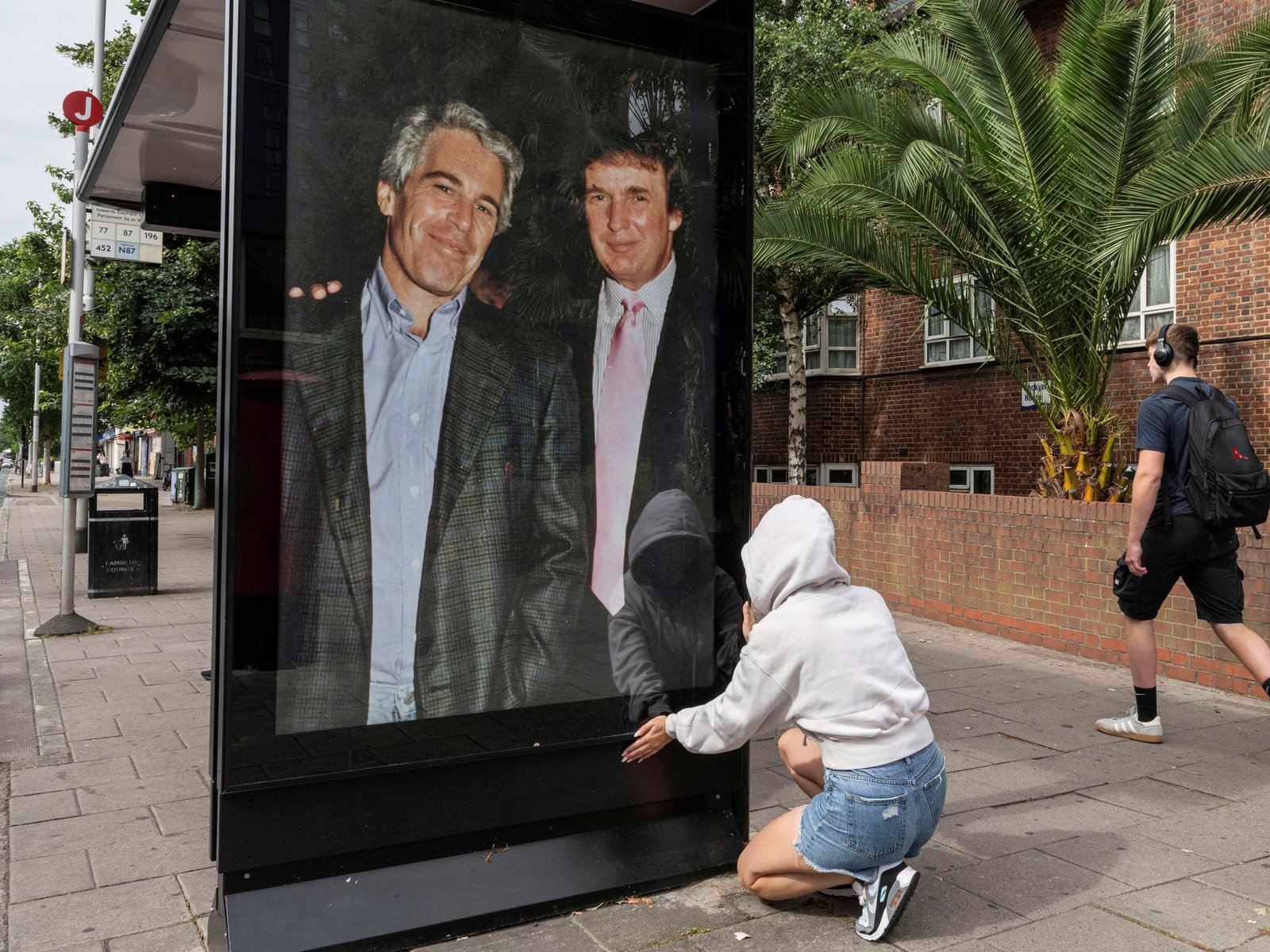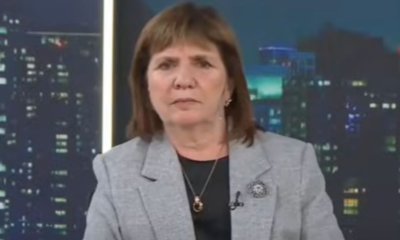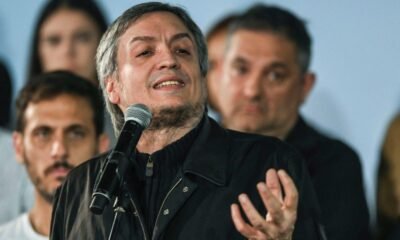INTERNACIONAL
Kaine breaks into Spanish as Dems force vote targeting Trump-El Salvador alliance over deportations

Top Democrats announced an effort Thursday to force the Trump administration to provide a report on how it is specifically complying with a court order to facilitate the return of wrongfully deported U.S. residents to El Salvador.
The resolution to do so from Sens. Tim Kaine of Virginia, Charles Schumer of New York, Alex Padilla of California and Chris Van Hollen of Maryland is «privileged,» – meaning it will require a full Senate vote. Kaine cited the specific code under a 1961 foreign assistance law that allowed such.
If passed, and the White House fails to abide by it, U.S. security assistance to El Salvador would be immediately frozen, Schumer, Kaine and Van Hollen said.
NOT A MARYLAND MAN: GOP BLASTS DEMOCRAT SENATOR FIGHTING FOR RETURN OF SALVADORAN NATIONAL
Sens. Chris Van Hollen, left, and Timothy Kaine, right, speak on a new resolution. (Fox News)
At a press conference outside the Capitol, the three men laid out how the vote would work, and one lawmaker later disclosed a separate effort to schedule a vote on sanctions against El Salvador over President Nayib Bukele’s work with Trump.
«I also send a message to the government of El Salvador,» Kaine said during his remakrs, breaking into Spanish midway.
«You might think it’s cute right now to grab attention by a bromance with President Donald Trump. He’s going to be a president for poco mas (a short time) – tres anos mas (three years more).»
Continuing in Spanish, Kaine said the two countries will always have relations, before transitioning back to English to say that the U.S. will not soon forget «you violating the human rights of American citizens, you’re wrong.»
«We will remember this forever,» Kaine pledged. «And there will be significant and challenging downstream consequences for any nation that violates the rights of Americans.»
KILMAR GARCIA NOW GETS 5 TOTAL DEM PROPONENTS IN EL SALVADOR
The move was spurred by the case of Kilmar Abrego Garcia, a suspected MS-13 gang member who was deported from Maryland to his home country last month.
Van Hollen later said the privileged resolution was not expressly about Garcia, but instead the greater idea that such people could be deported and/or treated without due process.
Echoing Kaine on repercussions for San Salvador’s government from Washington, Van Hollen spoke of plans to also seek a sanctions vote against Bukele «and all those who are part of his government conspiring with Donald Trump to deprive residents of the United States of their constitutional rights.»
Returning again to speaking bilingually, Kaine responded to a reporter’s question by summing up the privileged resolution in Spanish.
«We have a guarantee of a vote after ten days on El Salvador and we are sending a message to President Trump that he needs to follow the law. And we are also sending a message to President Bukele that we are not going to forget if the government of El Salvador is violating American human rights,» he said.
In a statement in English aside from the conference, Kaine said Bukele «has rounded up tens of thousands of Salvadorans without due process and jammed them indefinitely into overpopulated torture centers. And now he’s trying to do the same to people living in the United States,» Kaine said in a statement obtained by Fox News Digital prior to the conference.
CLICK HERE TO GET THE FOX NEWS APP
«We will use this resolution to force accountability,» said Rep. Joaquin Castro, D-Texas, a House supporter of the resolution – though Kaine said it does not require their blessing.
Van Hollen, who took a junket to El Salvador to attempt to bring Garcia to Maryland – where his family lives – said Trump has failed to comply with the order to facilitate his return.
Both Trump and Bukele appeared to agree in an Oval Office meeting last month that returning Garcia would be «preposterous» and that the court order didn’t quite say what critics said it did.
Fox News Digital reached out to the White House and Senate Majority Whip John Barrasso, R-Wyo., for comment.
Politics,Donald Trump,Trump’s First 100 Days,Senate Democrats,Immigration
INTERNACIONAL
Tailandia advirtió que los enfrentamientos armados con Camboya podrían derivar en una guerra “a gran escala”

Tailandia advirtió este viernes que los enfrentamientos armados con Camboya podrían escalar a una guerra a gran escala, en el segundo día consecutivo de hostilidades que ha dejado al menos 16 muertos y obligado a evacuar a más de 138.000 personas en ambos lados de la frontera.
“Si la situación se agrava podría derivar en una guerra, aunque por ahora sigue limitada a enfrentamientos”, declaró el primer ministro interino tailandés, Phumtham Wechayachai, ante la prensa en Bangkok.
La tensión se disparó el jueves debido a una disputa territorial de décadas entre los dos países del sudeste asiático, con combates que incluyeron el uso de tanques, aviones de combate, artillería y cohetes BM-21.
Se trata de la escalada militar más grave desde 2011 en una zona de 800 kilómetros de frontera, donde persisten áreas no delimitadas oficialmente, salpicadas de templos antiguos.
Según el Ministerio del Interior tailandés, las autoridades evacuaron a 138.000 civiles, incluidos 428 pacientes hospitalarios, desde cuatro provincias limítrofes con Camboya.
El balance oficial en Tailandia ascendió a 15 muertos —un soldado y 14 civiles— y 46 heridos. Por su parte, Camboya reportó un muerto y cinco heridos, en su primer informe oficial desde el inicio del conflicto.

Los enfrentamientos se reanudaron en la madrugada del viernes en tres puntos distintos, de acuerdo con el ejército tailandés. Según su versión, las fuerzas camboyanas lanzaron fuego con armas pesadas, artillería y cohetes múltiples, a lo que las tropas tailandesas respondieron con “fuego de apoyo apropiado”. El ejército agregó que los choques incluyeron seis zonas de combate el jueves, entre ellas dos antiguos templos.
En el municipio camboyano de Samraong, a 20 kilómetros de la frontera, periodistas de la agencia AFP registraron disparos lejanos de artillería durante la mañana. “Vivo muy cerca de la frontera. Tenemos miedo porque empezaron a disparar de nuevo sobre las 6 de la madrugada”, relató Pro Bak, un residente de 41 años que huía con su familia hacia un templo budista. “No sé cuándo podremos volver a casa”, añadió.
La crisis diplomática también se agravó. Tailandia expulsó al embajador camboyano y llamó a consultas a su representante en Phnom Penh, luego de que una mina terrestre hiriera a cinco soldados tailandeses. Camboya respondió retirando a todos sus diplomáticos en Bangkok, excepto uno, y degradando las relaciones al nivel más bajo.
El Consejo de Seguridad de la ONU se reunirá de urgencia y a puerta cerrada este viernes, tras una solicitud del primer ministro camboyano, Hun Manet.

En paralelo, Estados Unidos y Francia instaron al cese inmediato de las hostilidades, mientras que la Unión Europea y China expresaron una profunda preocupación y pidieron diálogo entre las partes.
Desde 2008 hasta 2011, los dos países ya libraron enfrentamientos en la zona, que dejaron 28 muertos y decenas de miles de desplazados. Una decisión de la Corte Internacional de Justicia en favor de Camboya calmó las tensiones durante una década. Sin embargo, la situación volvió a deteriorarse en mayo de este año, tras la muerte de un soldado camboyano en un nuevo choque fronterizo.
Los combates actuales reflejan la fragilidad de la paz en la región y han despertado la preocupación de la Asociación de Naciones del Sudeste Asiático (ASEAN).
El primer ministro de Malasia, Anwar Ibrahim, quien ocupa la presidencia rotativa del bloque, declaró haber hablado con sus homólogos de Camboya y Tailandia, a quienes pidió diálogo inmediato. Según dijo, ambos mostraron “señales positivas y predisposición” a buscar una salida pacífica.
(Con información de AFP)
Asia / Pacific,Defense,Diplomacy / Foreign Policy,SINGAPORE
INTERNACIONAL
Fox News Poll: The GOP is seen as more likely to have a clear plan for the country

NEWYou can now listen to Fox News articles!
With the 2026 midterm elections more than a year away, a new Fox News survey finds that while the Republican Party has lost some ground to the Democratic Party on handling key issues, voters are more likely to think the GOP has a clear plan for dealing with the country’s problems.
The survey, released Thursday, finds that by a 10-point margin, more voters think the Republicans have a clear plan for the U.S. than the Democrats: 43% vs. 33%. Still, majorities feel neither the GOP (54%) or the Democrats (64%) have a plan. This is about where sentiment was three years ago, the last time the question was asked.
FOX NEWS POLL: TRUMP FACING HEADWINDS AT SIX-MONTH MARK
Far more Republicans (79%) than Democrats (51%) are confident their party has a clear plan, and that’s what hurts the Democrats. While at least two-thirds of independents feel neither party has a plan, more trust the GOP (30% vs. 25%).
At the same time, the survey shows some significant erosion in the GOP’s handling of key issues compared to the last time Fox asked in 2023, including in areas where they are traditionally preferred.
Voters view the Republican Party as better able to handle national security (by 14 points), immigration (+6R), and government spending (+5R) while the Democratic Party is favored on climate change (by 23 points), health care (+19D), social security (+17D), education (+15D), and energy policies (+6D).
The parties are rated about equally on inflation (+1D), gun policy (even), the economy (+1R), and foreign policy (+3R).
Compared to 2023, support for the GOP is down on immigration by 4 points, national security by 6, government spending by 6, foreign policy by 9, and the economy by 14. Plus, the Republicans’ 12-point advantage on inflation has disappeared, as Democrats have a 1-point edge today.
While the Democrats have largely maintained support on their best issues, it’s noteworthy they saw a 12-point increase on education, as voters have been split on who would better handle the issue for the last few years.
FOX NEWS POLL: APPROVAL OF SCOTUS AT 5-YEAR HIGH, REBOUNDING FROM RECORD LOW IN 2024
These shifts can mostly be attributed to self-identified Democrats solidifying their preference for their own party’s handling of the issues, as well as independents lessening their support for Republicans or switching to Democrats.
Self-identified Republicans continue to express high levels of support for their party on the issues.
«Independents and even some Democrats had soured on President Biden and the Democratic Congress by 2023 and 2024, but they have shifted to the left a bit in 2025 in response to the policies of President Trump and the Republicans,» says Republican pollster Daron Shaw, who conducts the Fox News survey with Democrat Chris Anderson. «An appreciable part of this is performance related. Without obvious economic and foreign policy victories, independents and soft Democrats could drift to the left, which could scramble the electoral dynamic heading into 2026.»
Overall, views of both major political parties are underwater. By 2 points, the Republican Party has a slightly better favorable rating (44% favorable) than the Democratic Party (42%), but more than half view both parties negatively (56% and 57% unfavorable, respectively). That’s relatively unchanged since April.
Positive views of the Republican Party have shown steady growth since October 2019, while the Democratic Party has been on a downward trajectory, reaching a record low in April (41% favorable).
The Republican Party enjoys more support among their party faithful (83% have a favorable view) than the Democratic Party (78% favorable). Seven in 10 independents have a negative view of both.
CLICK HERE FOR CROSSTABS AND TOPLINE
Conducted July 18-21, 2025, under the direction of Beacon Research (D) and Shaw & Company Research (R), this Fox News survey includes interviews with a sample of 1,000 registered voters randomly selected from a national voter file. Respondents spoke with live interviewers on landlines (114) and cellphones (636) or completed the survey online after receiving a text (250). Results based on the full sample have a margin of sampling error of ±3 percentage points. Sampling error for results among subgroups is higher. In addition to sampling error, question wording and order can influence results. Weights are generally applied to age, race, education, and area variables to ensure the demographics of respondents are representative of the registered voter population. Sources for developing weight targets include the American Community Survey, Fox News Voter Analysis and voter file data.
INTERNACIONAL
«Fake news»: la Casa Blanca trata despegar a Donald Trump del caso Epstein y frenar la tormenta política

La ofensiva contra Barack Obama
Donald Trump,Jeffrey Epstein,Estados Unidos

 ECONOMIA3 días ago
ECONOMIA3 días agoEl consumo en Argentina crece 4% en junio, ante menor inflación y más crédito

 POLITICA1 día ago
POLITICA1 día agoMáximo Kirchner declaró una fortuna de 8.300 millones de pesos: representa un 76% más que el año anterior

 POLITICA2 días ago
POLITICA2 días agoLos organizadores de la Derecha Fest pasaron un video de Villarruel y algunos asistentes gritaron “traidora”




































